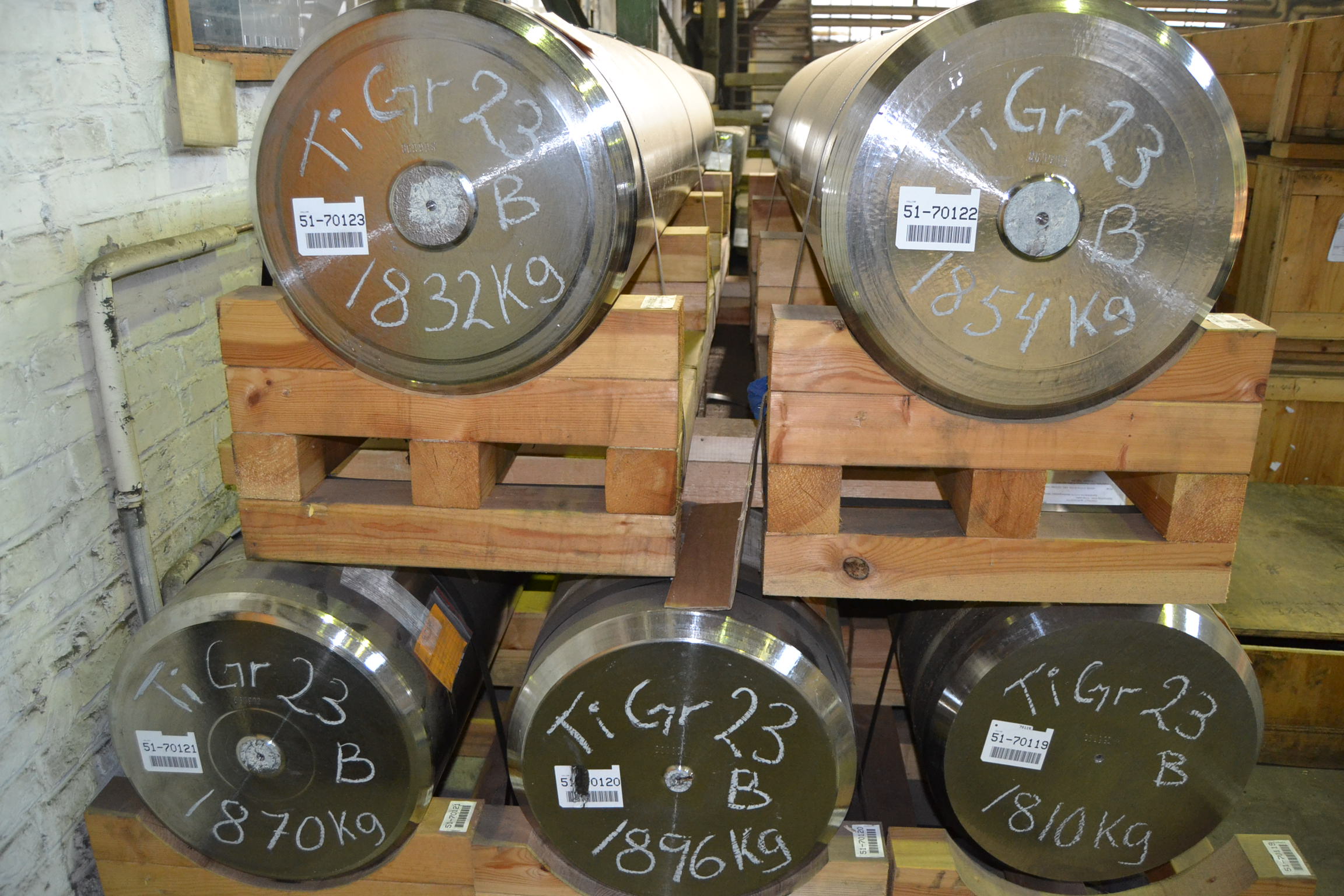 Deutsch
Deutsch  English
English  Netherlands
Netherlands  Turkey
Turkey 

| Name | Titanium |
| Symbol | Ti |
| Atomic number | 22 |
| Atomic mass | 47,867 u |
| Density | 4.50 g/cm3 |
| Melting point | 1941 K (1668 °C) |
HWN titan GmbH supplies high quality semi-finished products made from titanium and other metals. Are you looking for a reliable partner to purchase titanium semi-finished products from? Do not hesitate to contact us via phone or use our contact form and get advise from our experts in Mönchengladbach (NRW).
Titanium is one of the most common elements in the earth’s crust. The minerals rutile (TiO2) and ilmenite (FeTiO3) form the basis of today’s titanium materials. In the 1940s, the Luxembourgian metallurgist and inventor Dr. William J. Kroll developed a chemical process (Kroll-Process) for the extraction of titanium sponge. The term is based on its process-related appearance after opening the distillation vessel. The processes reduces Titaniumtetrachloride to 99.9 % titanium through the use of magnesium and until today builds the foundation for commercial production.
Materials made from titanium are characterised by certain features and are indispensable in today’s aeronautics. Sophisticated titanium alloys are adapted to match the special needs of various high-performance industries. The outstanding characteristics of this material family are its high strength at low density, biocompatibility, a low coefficient of thermal expansion and excellent corrosion resistance in oxidising media.

Along with zirconium, niobium and tantalum, titanium belongs to the family of reactive metals whose reaction with oxygen leads to high corrosion resistance. In this process, solid oxide layers are formed on the material’s surfaces. In nature, these materials only exist in the form of mineral ores, with zirconium always being linked to hafnium which is very difficult to separate. Zirconium containing a highly reduced hafnium content is of high significance for nuclear industries. Niobium and niobium on the other hand alloys are essential for state of the art imaging techniques in medical engineering (magnetic resonance imaging).
However, these materials’ high affinity to gases can cause negative effects as well. Thus, during their production and processing the influx of reactive gases must be avoided, placing high demands on plant safety and processing and leads to higher prices in comparison to conventional stainless steel. With all these materials, oxidation resistance at high temperatures is limited.
Name: Titanium
Symbol: Ti
Atomic number: 22
CAS-number: 7440-32-6
Atomic mass: 47,867
Aggregate state: Solid
Chrystialline structure: Hexagonal up to 882 °C / cubic-space-centered >882 °C
Density: 4,50 g/cm³
Magnetism: Paramagnetic
Melting point: 1668 °C
Specific heat capacity: 523 J(kg K)
Thermal conductivity: 22 W/(m K)
E-Module: 105 GPa
Ingot • Slab • Club • Rod • Wire • Plate • Sheet Metal • Coil • Foil • Pipe • Pipe Accessories • Powder • Sponge